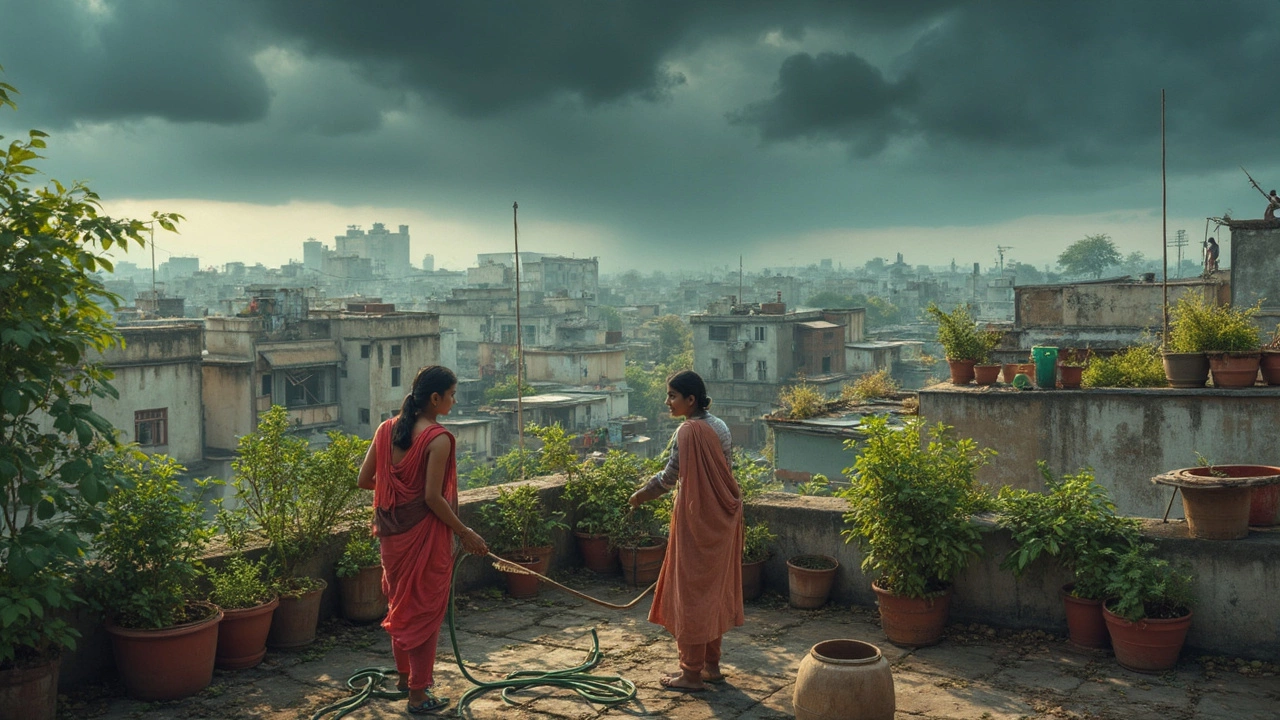Terrace houses seem perfect for a rooftop garden, but there are real downsides nobody talks about. Discover practical drawbacks, from tricky maintenance to neighbor disputes. Learn how weather can wreak havoc and why safety takes center stage. This article will break down common issues, offer workarounds, and help you decide if terrace gardening is worth your effort. It’s not all sunsets and strawberries up there!
Terrace House Gardening: Tips for Small Space Growing in India
When you live in a terrace house, a residential building with an open rooftop area often used for gardening or drying clothes. Also known as flat with terrace, it offers one of the best opportunities for urban gardeners in India to grow food, herbs, and flowers without needing a backyard. Many people think gardening means land, but in cities like Delhi, Mumbai, or Bangalore, your terrace is your farm. It gets full sun, fresh air, and space most apartments don’t offer. The key is working with what you have—sunlight patterns, wind, and local climate—not fighting against them.
A terrace garden, a planted area on the rooftop or upper-level outdoor space of a building isn’t just about pots on the floor. It’s about smart design: where to place plants for sun, how to manage water runoff, and what containers hold up under monsoon rains. You’ll find that balcony gardening, growing plants on elevated outdoor ledges, often limited in size and exposure is similar but smaller—terrace gardens give you room to grow bigger plants like tomatoes, lemons, or even dwarf fruit trees. And unlike ground soil, terrace soil needs regular feeding because it drains fast. That’s why compost and good potting mix matter more here than in a traditional garden.
People often ask: Can I really grow vegetables on my terrace? Yes—especially if you pick the right ones. In India, plants like basil, chillies, spinach, and brinjal thrive in containers if they get five to six hours of sun. You don’t need fancy tools, just clean pots, good soil, and a routine. Watering is the biggest mistake—overwatering kills more plants than neglect. Drip systems or self-watering pots help, especially if you’re away during the day. And don’t forget about wind. Tall plants need support. Heavy pots need to be secured. A windy terrace can dry out soil in hours.
What makes terrace gardening in India unique is the climate. You’re dealing with scorching summers, sudden monsoons, and short winters. That’s why plants that bloom all year, like marigolds or poinsettias, are favorites. They’re tough, colorful, and don’t need constant attention. You’ll also find that soil amendments like perlite and compost are more important here than in field farming. Dense soil doesn’t work in pots—it turns to mud or hardens like brick. And yes, you can reuse old containers. Just clean them well before planting.
Some think terrace gardening is only for experts. It’s not. It’s for anyone who wants fresh herbs, wants to save money, or just likes watching things grow. Whether you’re using recycled buckets, vertical racks, or hanging baskets, the goal is simple: make the most of your space. The posts below cover exactly that—how to avoid common mistakes with hydrangeas on balconies, how to fix clogged drip lines, how to choose the best soil for containers, and which plants survive India’s toughest weather. You’ll find guides on oiling your terrace to protect the surface, how to compost in small spaces, and which vegetables grow fastest in pots. No fluff. Just what works.
